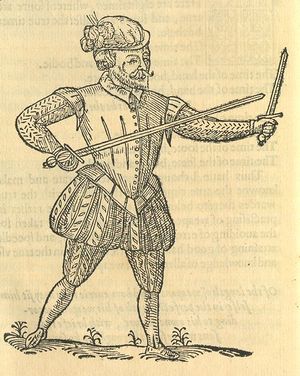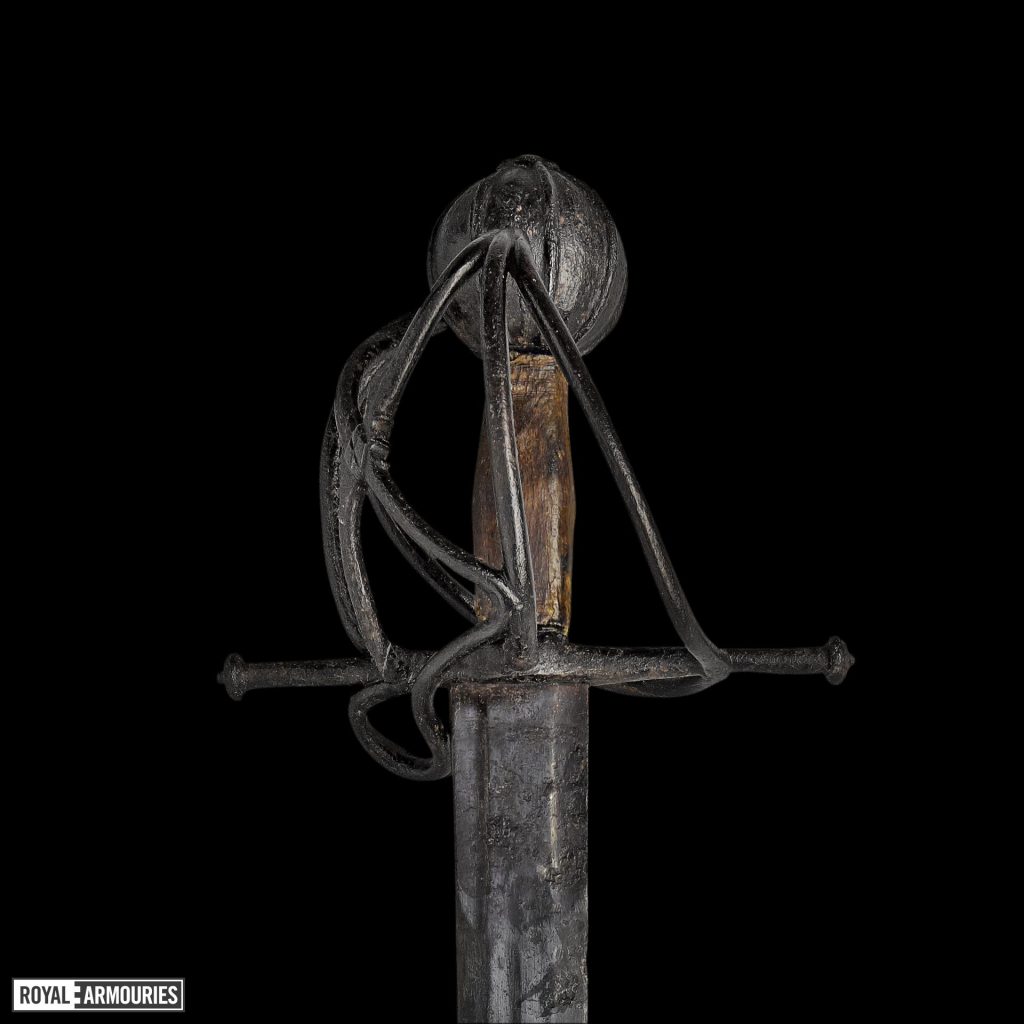The Noble Science of Defence is the term that has been used to describe martial arts in England for more than 500 years. Schools were known as ‘Schools of Fence’ or ‘Fence Schools’ and, in London, they were run and organised by an association known as the Masters of Defence.
The Masters of Defence were an association of masters who set forth the rules by which the association and its schools were run. They set out rules for how masters should conduct themselves and run their schools, including punishments if they misbehaved. It also sets out the manner in which prizes (gradings/ranks) were to be ‘played’ as well as what each rank means, and how to go about earning them.
It is this document which inspires the traditions of our school. We have very similar ranks, and these are earned by playing for prizes in a similar manner to Tudor times. The Masters of Defence explained that each grade should be held for at least seven years before progressing to the next. This is a rule that appears to have rarely been adhered to however. At the Noble Science school we maintain the tradition of requesting to play for a prize but do not limit the time between them.
The playing of prizes is a trial by combat demonstrating the practitioners skill against fencers of the same rank that the student is aiming to achieve. At the Noble Science of Defence we incorporate a similar idea, in that the student will play against students from other schools to demonstrate their abilities against unknown opponents. This demonstrates understanding of the core principles, and an ability to adapt. Students will play against many different weapons but will have been furnished with the skills to be able to deal with this situation.

In conjunction with the traditions of the ancient Fence Schools we teach an art inspired by a particular historical document. In 1599, a book was published by a gentleman of the Elizabethan court by the name of George Silver. This book was never intended as an instruction in the noble science in the manner that so many other contemporary manuscripts used for historical fencing were. George Silver himself was not a teacher of martial arts and did not run a fence school of his own. Instead, this book was concerned with the prevalence of dueling culture and the manner in which the rapier was used to conduct them. Silver’s book is dedicated to explaining the differences between his art and the art of the rapier.
This book was lost for some time before it was found and republished in 1898. When the original 1599 document was found, it was accompanied by a second, unpublished book by the same author. This second book offered a more detailed explanation of the art of the sword, and the two books combined have a complete description of the principles of the Noble Science. It is these principles which we use to teach the art.
Within these texts Mr. Silver states that this art has been passed down to him from the ‘ancients’ or the ones who came before. He states the order in which each part of the art should be learned and it is this element that has allowed us to build our syllabus. The books also describe the principles that govern the use of weapons and it is these principles that have been used to develop the syllabus for the Noble Science of Defence. They rarely describe any technique in any detail showing the importance of the understanding of the principles.

The sword that the art was devised for is described as a single sword of ‘convenient length’ with a strong hilt to protect the hand. It is generally accepted that this sword is what is known as an English basket hilt sword. There are multiple examples of such a weapon as can be found in the Royal Armouries in Leeds. Other weapons described are the buckler – a small hand held shield, the dagger (possibly with a hilt), the quarterstaff – an 8-9 foot wooden pole, the bill – A 6ft wooden haft with a bladed hook developed from the forestry industry, and the pike – a 15-18ft long spear.
